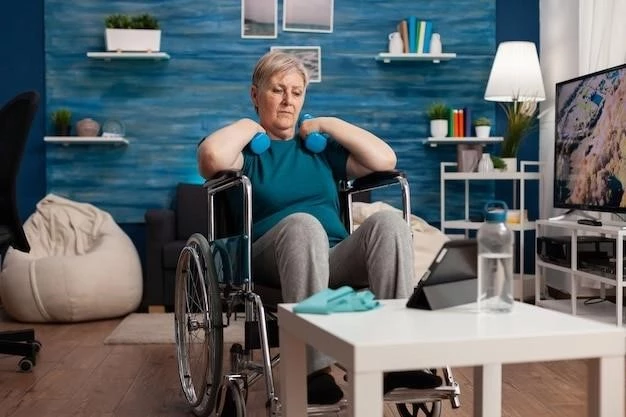Introduction to Spastic Paraplegia Type 2٫ X-linked
The hereditary disorder known as Spastic Paraplegia Type 2, X-linked (SPG2) is characterized by progressive muscle stiffness and lower limb paralysis. It results from mutations in the PLP1 gene on the X chromosome, leading to spasticity and weakness primarily in the lower limbs.
Definition and Classification
Spastic Paraplegia Type 2, X-linked (SPG2) is a rare hereditary disorder characterized by progressive muscle stiffness and paralysis in the lower limbs. It falls under the group of genetic disorders known as hereditary spastic paraplegias, with SPG2 specifically being linked to mutations in the PLP1 gene located on the X chromosome.
Genetic Basis of the Disease
Spastic Paraplegia Type 2, X-linked (SPG2) results from mutations in the PLP1 gene located on the X chromosome, causing progressive muscle stiffness and paralysis primarily in the lower limbs.
X-Linked Inheritance Pattern
Spastic Paraplegia Type 2, X-linked (SPG2) follows an X-linked recessive inheritance pattern, where the mutated gene responsible for the disorder is located on the X chromosome. This condition primarily affects males and is passed from carrier females to their sons. Understanding the genetic basis of SPG2 is crucial for accurate diagnosis and genetic counseling.
Role of PLP1 Gene Mutations
The involvement of mutations in the PLP1 gene, located on the X chromosome, plays a crucial role in the development of Spastic Paraplegia Type 2, X-linked. These mutations lead to the disruption of myelin proteins, specifically affecting the central nervous system myelin and resulting in the characteristic spasticity and weakness observed in individuals with SPG2.
Clinical Presentation
Spastic Paraplegia Type 2٫ X-linked (SPG2) manifests as progressive muscle stiffness and lower limb paralysis٫ commonly seen in childhood-onset cases.
Symptoms and Features
Individuals with Spastic Paraplegia Type 2, X-linked (SPG2) commonly present with progressive muscle stiffness (spasticity) and lower limb paralysis, typically appearing in childhood-onset cases. This hereditary disorder primarily affects the lower limbs, resulting in challenges with mobility and coordination.
Diagnosis and Testing
Diagnosis of Spastic Paraplegia Type 2, X-linked (SPG2) involves genetic testing to identify mutations in the PLP1 gene, typically seen in childhood-onset cases presenting with progressive muscle stiffness and lower limb paralysis.
Genetic Testing for SPG2
Genetic testing for Spastic Paraplegia Type 2, X-linked (SPG2) involves identifying mutations in the PLP1 gene located on the X chromosome. This testing is crucial for confirming the diagnosis and understanding the genetic basis of the disorder, particularly in cases presenting with progressive muscle stiffness and lower limb paralysis.
Disease Management
The management of Spastic Paraplegia Type 2, X-linked (SPG2) involves addressing the progressive muscle stiffness and lower limb paralysis through a multidisciplinary approach, including physical therapy and assistive devices to improve mobility and quality of life.
Therapeutic Approaches
Management of Spastic Paraplegia Type 2, X-linked (SPG2) involves a multidisciplinary approach incorporating physical therapy to address muscle stiffness and paralysis, enhancing mobility and overall quality of life. Therapeutic strategies aim to improve motor function and alleviate spasticity, focusing on individualized care to meet the specific needs of each patient.
Research and Treatment Advances
Ongoing research in Spastic Paraplegia Type 2, X-linked (SPG2) focuses on molecular targets for potential therapeutics to address the progressive muscle stiffness and lower limb paralysis associated with the condition. Therapeutic advancements aim to improve patient outcomes and quality of life.
Current Studies on SPG2
Current research on Spastic Paraplegia Type 2, X-linked (SPG2) focuses on molecular targets for potential therapeutics to address the progressive muscle stiffness and lower limb paralysis seen in individuals with the condition. Therapeutic advancements strive to improve patient outcomes and enhance the quality of life for those affected by SPG2.
Epidemiology and Prevalence
The prevalence of Spastic Paraplegia Type 2, X-linked (SPG2) is relatively low, likely representing a small percentage of spastic paraplegia cases. This condition follows an X-linked recessive pattern of inheritance.
Frequency of SPG2 Cases
Spastic Paraplegia Type 2, X-linked (SPG2) is considered to be a rare condition, representing a small proportion of spastic paraplegia cases. This disorder typically follows an X-linked recessive pattern of inheritance. Understanding the prevalence of SPG2 is essential for accurate diagnosis and management.
Complications and Prognosis
Complications in Spastic Paraplegia Type 2, X-linked (SPG2) can lead to potential long-term effects affecting mobility and quality of life. Understanding the prognosis is important for effective disease management.
Potential Long-Term Effects
Spastic Paraplegia Type 2, X-linked (SPG2) can lead to potential long-term effects, impacting mobility and quality of life. These effects may include progressive muscle weakness, gait difficulties, and challenges with daily activities. Understanding the long-term implications is essential for providing comprehensive care and support for individuals with SPG2.
Impact on Patients and Families
The diagnosis of Spastic Paraplegia Type 2, X-linked (SPG2) can have a profound impact on patients and their families, as it presents challenges related to mobility, quality of life, and long-term care.
Psychosocial Aspects of SPG2
Understanding the psychosocial impact of Spastic Paraplegia Type 2, X-linked (SPG2) on patients and families is crucial, as coping with the challenges related to mobility and quality of life requires emotional support and access to resources for overall well-being.
Supportive Care and Resources
Individuals with Spastic Paraplegia Type 2, X-linked (SPG2) may benefit from supportive care, including access to resources for physical therapy, assistive devices, and psychological support for both patients and their families.
Assistance for Individuals with SPG2
Individuals diagnosed with Spastic Paraplegia Type 2, X-linked (SPG2) may benefit from various forms of assistance, including access to physical therapy, assistive devices, and psychological support. These resources can enhance mobility, independence, and overall well-being for both the affected individuals and their families.

Differential Diagnosis
When evaluating individuals with symptoms of Spastic Paraplegia Type 2, X-linked (SPG2), healthcare professionals need to distinguish it from other conditions with similar presentations to ensure accurate diagnosis and appropriate management.
Distinguishing SPG2 from Other Conditions
Healthcare professionals must differentiate Spastic Paraplegia Type 2, X-linked (SPG2) from other conditions with similar symptoms, ensuring accurate diagnosis and appropriate treatment tailored to the specific disorder.

Future Directions in Research
Research directions for Spastic Paraplegia Type 2, X-linked (SPG2) focus on understanding the molecular targets for potential therapeutics, aiming to address the progressive muscle stiffness and lower limb paralysis associated with the condition. Advancements in research aim to improve treatment outcomes and enhance the quality of life for individuals affected by SPG2.
Promising Areas of Study for SPG2
Current research in Spastic Paraplegia Type 2, X-linked (SPG2) focuses on exploring molecular targets for potential therapeutics aimed at addressing the progressive muscle stiffness and lower limb paralysis associated with the condition. Advancements in understanding the underlying mechanisms of SPG2 may pave the way for innovative treatment strategies to improve patient outcomes and quality of life.
Collaboration and Advocacy
Efforts towards collaborations and advocacy play a vital role in optimizing the care and support for individuals with Spastic Paraplegia Type 2٫ X-linked (SPG2). Multidisciplinary care and advocacy help ensure comprehensive management and access to resources for improved patient outcomes.
Importance of Multidisciplinary Care
Effective management of Spastic Paraplegia Type 2٫ X-linked (SPG2) involves a multidisciplinary care approach to address the complex needs of patients comprehensively. Collaboration between healthcare professionals٫ therapists٫ and support services is crucial for optimizing the care and quality of life for individuals living with SPG2.
Global Initiatives and Awareness
Efforts aimed at enhancing global awareness and advocacy play a crucial role in increasing knowledge about Spastic Paraplegia Type 2, X-linked (SPG2). Global initiatives strive to promote collaboration, education, and support for individuals affected by SPG2 worldwide.
Initiatives to Increase Knowledge about SPG2
Based on the latest information available, the disorder known as Spastic Paraplegia Type 2٫ X-linked (SPG2)٫ is a rare condition characterized by spasticity and paralysis primarily affecting the lower limbs. It is linked to mutations in the PLP1 gene located on the X chromosome. The genetic studies have provided insights into the genetic locus of SPG2٫ signifying its location on the X chromosome. SPG2 is part of a group of genetic disorders known as hereditary spastic paraplegias٫ with manifestations of progressive muscle stiffness and lower limb paralysis. The condition is inherited in an X-linked recessive pattern. Collaborative efforts and advocacy are essential in increasing awareness٫ education٫ and support for individuals living with SPG2 globally. Researchers are exploring molecular targets for potential therapeutics to address the symptoms associated with SPG2٫ aiming to enhance patient outcomes and quality of life.
Conclusion and Summary
In conclusion, Spastic Paraplegia Type 2, X-linked (SPG2) is a rare hereditary disorder characterized by progressive muscle stiffness and lower limb paralysis linked to mutations in the PLP1 gene on the X chromosome. Understanding the genetic basis, clinical presentation, and management strategies for SPG2 is essential for optimal patient care. Ongoing research and collaborative efforts are improving therapeutic approaches and advancing knowledge about this condition, ultimately aiming to enhance patient outcomes and quality of life.
